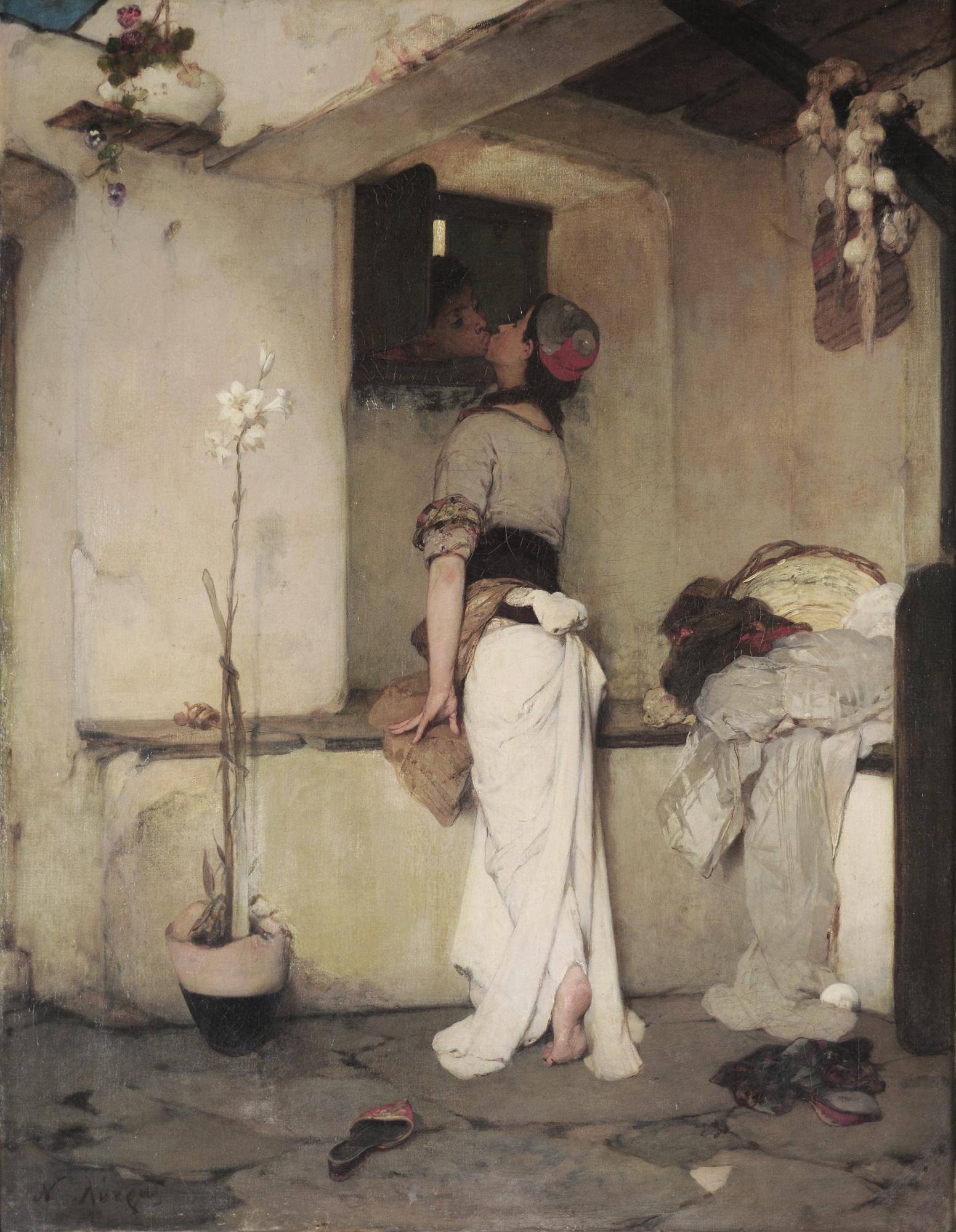In a series of self-portraits dressed as Santa Claus, Philadelphia-based artist Ed Wheeler, photographer, incorporates himself in classical paintings from Botticelli to Caravaggio to Monet.
In so doing he transforms the masterworks of art history from the Renaissance to the Surrealists. Santa Classics, his derivative art series, is based on a digital photography process.
Wheeler’s goal is to pay homage to the original paintings while offering art lovers an additional reason to smile.
Francesco Hayez | The Kiss, 1859 | Pinacoteca di Brera, Milan
















